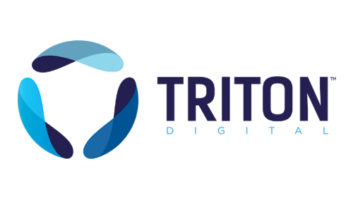IBOC Update: Data and Asymmetrical Sidebands
Feb 1, 2012 2:00 AM, By Doug Irwin, CPBE DRB AMD
Ibiquity’s brand of IBOC (HD Radio) has new capabilities worth studying. Let’s look at two specifically: Artist Experience and asymmetrical IBOC sideband capability.
Likely you’ve heard or read about the capacity of HD Radio to transmit images; not moving ones, but rather artwork related to music or commercials. Officially called Artist Experience, it is really in its early stages as this is written. Here’s iBiquity’s official definition:
“Artist Experience is the synchronous transmission, delivery and display of images on the receiver related to a specific audio segment. Cover art images (for example) may also include artist photos, slide shows or other images related to the song or audio being played. Commercial images related to an advertisement segment may also be displayed using this feature.”
So how is Artist Experience implemented? For starters, an additional software application manages the image-associated data. As of this date, Broadcast Electronics TRE, Emmis Interactive/Tag Station and Jump2Go have products that format and manage this data. One common component of these solutions is an interface client known as the MSAC (multiport synchronous asynchronous client) that typically runs on a computer that can communicate with the importer via IP. (MSAC could also run on the importer itself.) The MSAC sequencer function supplies synchronization information to the studio automation system, typically including:
> Song PSD content
> Large object transfer ID
> Song play timingIn addition, it issues pre-fetch commands to get images from an image server, and it will run a schedule request/response API, which includes:
> Whether the image is a station logo or cover art or other
> Lot ID of the image (optional, generated if not supplied)
> Data file name
> Service name, HD1-AE, HD3-logo
> When the sync event will occur
> Did sync event occur
Artist Experience is a data service configured with a specific bandwidth to deliver the images. Typically the service requires 5-7kb/s to deliver images for HD1, HD2 and HD3.
The MSAC and LOT clients were developed by iBiquity, but they are integrated into a software solutions offered by the three manufacturers mentioned above. In other words, they are sub-components used by the manufacturers to build the Artist Experience software solution. By this method, each manufacturer can build the user interface to give it their own look and feel – but the core elements are the same.
– continued on page 2
IBOC Update: Data and Asymmetrical Sidebands
Feb 1, 2012 2:00 AM, By Doug Irwin, CPBE DRB AMD
The MSAC client can be configured to manage bandwidth for all data services. This is a configuration that iBiquity refers to as a multiport configuration.
The images themselves are limited in size to 24KB in a JPG or PNG file format. The resolution on the end-user device of 200px x 200px.
Importers must use v4.3.1P1 or later. Automation systems must incorporate HD Radio HDP PSD SDK v4.7 or later; and, according to iBiquity “All of the major automation manufacturers (examples: BE AudioVault/TRE, Arctic Palm, David, Dalet, Enco, Jump2Go, MediaTouch, RCS, WideOrbit) have Program Service Data (PSD) generator options for their current product offerings. Some automation system software may require upgrades to incorporate the new feature.”
So how does this extra information gets transmitted outbound via IBOC? Artist Experience images fall under the category of Advanced Data Services, which the NRSC defines as:
Advanced data services provide broadcasters with the ability to transmit information that may be unrelated to MPS, SIS or SPS. These services can carry any form and content that can be expressed as a data file or a data stream, including audio services. Examples of such services include (i) visual effects associated with MPS, SIS, or SPS services; (ii) multimedia presentations of stock, news, weather, and entertainment programming including audio, text and images; (iii) broadcast updates to in-vehicle systems; (iv) local storage of content for time shifting and later replay; (v) targeted advertising; (vi) traffic updates and information for use with navigation systems; and (vii) subscription or free-but-limited-access services using conditional access.
Your exporter and exciter need to be at the correct software version as well, specifically v4.3.2 (or later) Image Support Client/Automation software based on LOT SDK v4.3.3.
And yes, there are receivers in the field that will show “artist experience” images. One example is the JVC KW-NT3HDT; two other JVC models were introduced at CES 2012. (The day this was written, over a dozen online stores offered this radio for sale.) Volkswagen claims to be the first to offer artist experience, and it will be available in selected 2012 models. And finally, there is the Insignia NS-HD02 portable, though as I write this, that unit appears to have limited availability.
– continued on page 3
IBOC Update: Data and Asymmetrical Sidebands
Feb 1, 2012 2:00 AM, By Doug Irwin, CPBE DRB AMD
To the sidebands
Let’s shift gears now and talk some about asymmetrical IBOC sidebands. Why is this necessary to begin with? To answer that, just a small snippet of the Commission’s own reasoning in their public notice (regarding MM 99-325) from Nov. 1, 2011:
A significant number of FM stations currently are precluded from taking advantage of the full 10dB digital power increase [from -20dBc to -10dBc] permitted by the Order [of Jan. 29, 2010] due to the presence of a nearby station on one but not both of the two first-adjacent channels. If asymmetric digital sideband operation is permitted, such stations presumably could increase their digital power on the sideband away from the limiting station.
So now with a reason to go ahead with this new facet of IBOC, two questions are rather obvious. What if anything will this do to plain old FM (analog) reception? And how effective is the transmission of asymmetrical sidebands with respect to the IBOC reception? Studies were undertaken to answer both of these questions.
Nautel engaged NPR Labs to perform laboratory testing on its peak-to-average-power reduction algorithm (PAPR) HD Powerboost. The purpose of the testing was to see how this PAPR affected FM reception of the host station. During the same tests, the effects of asymmetrical sideband transmission were also tested. I should mention also that the tests were performed operating in MP3 (extended hybrid) mode, which adds an additional set of partitions for OFDM carriers closer in to the host frequency. This was done because it represents a tougher set of test conditions than that of MP1 mode. Also, the tests utilized automotive, home stereo and shelf system receivers for analog FM compatibility tests and an analog automotive receiver for RBDS performance tests.
The entire report is available online. Here’s a summary of the results:
> In comparison with conventional IBOC operation, Nautel’s PAPR had little or no measureable effect on the performance of analog test receivers, even with the highest-tested asymmetrical digital sideband ratios of -10/-20dBc.
> Asymmetrical operation reduced the audio noise level of the home receivers by up to 3dB as either sideband was reduced
> RBDS reception sensitivity with mobile fading was slightly affected by -10dBc symmetrical sidebands, but showed improvements similar to analog FM reception with asymmetrical operation
The report was directed by and submitted by John Kean of NPR labs, and after a detailed analysis of the measurement data (seen near the bottom of page 10) the report states: “In sum, broadcasters are best off maintaining symmetrical sideband levels, but coverage improvements are possible with an increase of only one sideband.”
To answer the question regarding the performance of the digital receivers, we look to iBiquity’s report published in December 2011, which is also available online.
– continued on page 4
IBOC Update: Data and Asymmetrical Sidebands
Feb 1, 2012 2:00 AM, By Doug Irwin, CPBE DRB AMD
This report was undertaken to see how the transmission of asymmetrical sideband power would benefit digital receivers in terms of the digital signal-to-noise ratio. It was done in the laboratory using three particular chipsets that iBiquity characterizes as being typical in both the OEM and aftermarket: the ST Micro STA-680, the Texas Instruments Jacinto, and the NXP SAF3560. The tests were done with IRSS 4.4.x PAR v.2 (A late news update: IRSS 4.4.x PAR v.2 was delivered to manufacturers on Jan. 17, 2012).
Four sets of measurements were taken; P1 partition with no interference, and P1 partition with 6dB D/U interference on the lower adjacent channel; and P3 partition, with no interference, and with 6dB D/U interference on the lower adjacent channel. Those measurements are shown in Figures 1, 2, 3 and 4 respectively. Interpreting these is easy; along the left-hand column you see the scale is decibels over the -20dBc (legacy) reference. The black bar is the difference in power with respect to the legacy power, calculated for each LSB to USB ratio. The colored bars represent the actual measured receiver performance, in decibels, as an improvement in digital SNR.

Click to enlarge

Click to enlarge

Click to enlarge

Click to enlarge
The conclusion to be drawn from these charts is that the increase in overall digital power (even asymmetrically) does produce an improvement in the digital signal-to-noise ratio.
– continued on page 5
IBOC Update: Data and Asymmetrical Sidebands
Feb 1, 2012 2:00 AM, By Doug Irwin, CPBE DRB AMD
As this is being written, we’re still in the Commission’s public comment period regarding proposed changes, but its public notice said this: “We tentatively conclude that it would be expedient to modify Form FCC 335-FM, currently used for Digital Notifications, to accommodate requests for increased digital power and/or operation with asymmetric digital sideband power.” So it seems rather clear that barring some huge change in their collective mindset that allowance for asymmetrical sidebands, from the legal perspective, is coming soon.
Technical perspective
What about the technical perspective? iBiquity is currently finishing IRSS 4.4.x with peak-to-average reduction power reduction (PAR) v.2, which will give IBOC exciters asymmetrical capability.
Nautel‘s HD Powerboost gives its exciters asymmetrical IBOC sideband capability already, and the company has been shipping them since April 2011. HD PowerBoost is optional, and Nautel has also made asymmetrical sideband capability available for its transmitters that don’t have it. The HD PowerBoost algorithm is used, but it’s configured to provide a better MER, as opposed to power gain.
Harris‘ Flexstar exciter also has asymmetrical IBOC sideband capability, and has been shipping with this capability since the summer of 2010.
Engineers at Continental Electronics have already been working with the beta version of IRSS 4.4.x and anticipate having its own software release (subsequent to the release of IRSS 4.4.x) in time to meet the needs of their customers looking to use asymmetrical sideband power.
According to Broadcast Electronics, its VPe technology already meets the soon-to-be released IBOC asymmetrical sideband transmission standard.
Artist Experience and asymmetrical IBOC sideband capability are two of the latest features for HD Radio. I’m of the belief that every new feature should be put in service, and enhancements should be used when they provide a definite advantage. You may not be a trailblazer and perhaps you want to see this technology mature, but please don’t let it pass your station by. We need to do everything we can to keep our listener attentions, no matter what it is.
Irwin is transmission systems supervisor for Clear Channel NYC and chief engineer of WKTU, New York.
February 2012
WAOK uses Method of Moments modeling, IBOC update, the Tieline Bridge-IT is taken on the road, and new EAS rules are released….










